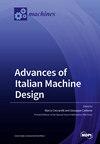ROMI: Design and Experimental Evaluation of a Linear Delta Robotic System for High-Precision Applications
IF 2.1
3区 工程技术
Q3 ENGINEERING, ELECTRICAL & ELECTRONIC
引用次数: 0
Abstract
In this paper, the design and experimental evaluation of a parallel robotic system based on a linear delta geometry is presented. The design considers the requirements for high-precision applications including workspace, motion resolution, and payload. The entire design process includes robot kinematics, control, and optimization, resulting in the demonstration of a working device. The robot structure offers a versatile and simplified design when compared with state-of-the-art devices being able to be adapted to perform different tasks while keeping the advantages of high precision with reduced complexity. The presented robot prototype was constructed and evaluated experimentally through three proof-of-concept experiments mimicking tasks requiring high motion precision such as microsurgery, semiconductor testing, and optical device alignment. The obtained results in the three experimental scenarios validate that the here-proposed design can achieve an average motion precision of ~3.3 ± 0.3 μm with varying load conditions, thus confirming its potential to be used for high-precision tasks in industrial and medical settings.ROMI: 面向高精度应用的线性三角洲机器人系统的设计与实验评估
本文提出了一种基于线性三角几何的并联机器人系统的设计与实验评价。该设计考虑了高精度应用的要求,包括工作空间、运动分辨率和有效载荷。整个设计过程包括机器人的运动学、控制和优化,从而得出一个工作装置的演示。与最先进的设备相比,机器人结构提供了多功能和简化的设计,能够适应执行不同的任务,同时保持高精度和降低复杂性的优势。通过三个概念验证实验,模拟了需要高运动精度的任务,如显微外科手术、半导体测试和光学器件校准,构建了机器人原型并进行了实验评估。三个实验场景的结果验证了本文提出的设计在不同负载条件下可以实现~3.3±0.3 μm的平均运动精度,从而证实了其在工业和医疗环境中用于高精度任务的潜力。
本文章由计算机程序翻译,如有差异,请以英文原文为准。
求助全文
约1分钟内获得全文
求助全文
来源期刊

Machines
Multiple-
CiteScore
3.00
自引率
26.90%
发文量
1012
审稿时长
11 weeks
期刊介绍:
Machines (ISSN 2075-1702) is an international, peer-reviewed journal on machinery and engineering. It publishes research articles, reviews, short communications and letters. Our aim is to encourage scientists to publish their experimental and theoretical results in as much detail as possible. There is no restriction on the length of the papers. Full experimental and/or methodical details must be provided. There are, in addition, unique features of this journal: *manuscripts regarding research proposals and research ideas will be particularly welcomed *electronic files or software regarding the full details of the calculation and experimental procedure - if unable to be published in a normal way - can be deposited as supplementary material Subject Areas: applications of automation, systems and control engineering, electronic engineering, mechanical engineering, computer engineering, mechatronics, robotics, industrial design, human-machine-interfaces, mechanical systems, machines and related components, machine vision, history of technology and industrial revolution, turbo machinery, machine diagnostics and prognostics (condition monitoring), machine design.
 求助内容:
求助内容: 应助结果提醒方式:
应助结果提醒方式:


